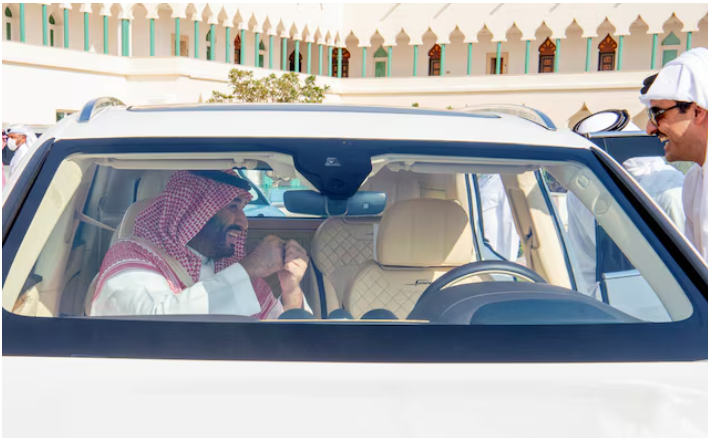Next month, Lusail City will play home to the biggest football tournament in the history of the sport, encapsulating Qatar’s aims and objectives and occupying a key place in the country’s history.
But aside from the aesthetics, how much do you truly know about it?
In the nineteenth century, Sheikh Jassim bin Mohammed Al Thani, the man who built present-day Qatar, resided in Lusail. He constructed Lusail Castle, which is located approximately 23 kilometers from Doha, to serve as a marker for the location of his residence. The Arabic word “Al Wassail,” which describes a rare plant native to the area, is where the city’s name is from.
The government of Qatar started making plans to transform Lusail into an ultramodern city more than a century after Sheikh Jassim called the region home.
Since 2005, that vision has progressively become a reality.
The city is now prepared to host the FIFA World Cup matches in its landmark Stadium, beginning with the Group C match between Argentina and Saudi Arabia on 22 November.
The city itself is now crowded with residence towers, hotels, sports venues and a cutting-edge public transportation system. In addition to a lively promenade surrounded with palm trees and a marina.
The development of Lusail City is a key component of Qatar National Vision 2030, a comprehensive development plan that aims to create a knowledge economy and lessen the nation’s reliance on hydrocarbons.
The project is spearheaded by Qatari Diar, a real estate company established to support the country’s expanding economy.
Hosting the FIFA World Cup has significantly advanced the country’s National Vision with infrastructure development initiatives, such as the Doha Metro, new highways and the growth of Lusail City, intensifying.
The integrated public transportation system operating through Lusail is expected to accommodate over a million spectators during the tournament.
Additionally, Qatar’s most walkable city has 75 km of cycling and walking paths, park and ride facilities, a light rail transit system that is connected to the metro and a water transportation system.
E-Green City
Being the first sustainable and smart city in Qatar, the main goal of developing Lusail was to build it while preserving Islamic architecture and the wealth of Qatari customs. By giving everyone access to a sustainable and comfortable way of life, the objective was to make lifestyles smarter and more environmentally friendly.
At every level of the planning process, eco-friendly and clever energy-saving techniques are used. A fiber-optic network and city-wide Wi-Fi make up the integrated ICT (information and community technology) infrastructure, which is essential to its operation.
The city was constructed in accordance with Qatar Sustainability Assessment System (QSAS) guidelines. All Lusail buildings have a QSAS rating of at least two stars after achieving their goals for management and operations, outdoor environment quality, local material procurement and recycling, and energy consumption efficiency.
The open spaces in the city are equally as well planned and efficient as the built infrastructure. The city provides a favourable environment for a tech-driven setting that integrates people, the environment, and infrastructure to create a futuristic sustainable city model.
Cooling technology
The sustainable infrastructure and utilities of Lusail city play a significant role in its status as a smart city.
The district cooling system, one of the world’s largest central cooling systems with four district stations and 175km of piping, is a significant utility. In terms of numbers, this will prevent 200,000 tonnes of carbon dioxide emissions every year.
To keep buildings cool, developers typically incorporate multiple air conditioning units into their designs.
Since cool air and cool water are provided centrally by the district cooling system, all that is required to link it is a duct system. This helps reduce the negative side effects on the ozone layer that would otherwise be observed when using several small electrical units.
Waste recycling
Another noteworthy feature of Lusail is the 24 km waste pipe network that has been erected underneath the city. The disposal of human waste is made simple by a system of pneumatic or vacuum tubes.
This network offers a brand-new, cutting-edge approach to waste disposal to reduce the amount of garbage trucks needed in densely populated areas. The buildings are connected to the pipe network, which then goes directly to the facilities outside the city for recycling and trash treatment.
As a result, every day about 70 tonnes of rubbish are prevented.

















Leave a Reply